Occasional papers are those published outside of the SpoilHeap monograph series. They are available for purchase via the UCL Online Store, or COMING SOON as Open Access downloads on UCL Discovery.
 THE MANAGEMENT OF THE RIVER STOUR FROM THE MEDIEVAL TO MODERN PERIODS: its waterfronts and the development of Sandwich
THE MANAGEMENT OF THE RIVER STOUR FROM THE MEDIEVAL TO MODERN PERIODS: its waterfronts and the development of Sandwich

Alice Dowsett, Damian Goodburn, Katya Harrow, Andrew Margetts and Chris Russel
Archaeology South-East was commissioned by the Environment Agency to undertake an archaeological watching brief, targeted investigations and historic building recording during the Sandwich Town Tidal Defence Scheme, both in and around the town. The scheme involved the construction off 14km of floodwalls and embankments along the Stour, from Richborough to Broad Salts. The fortunes of Sandwich and its environs have been inextricably linked to the river throughout the town’s history. This volume details the findings of the investigations, which revealed evidence for the management of the river both within and outside the town.
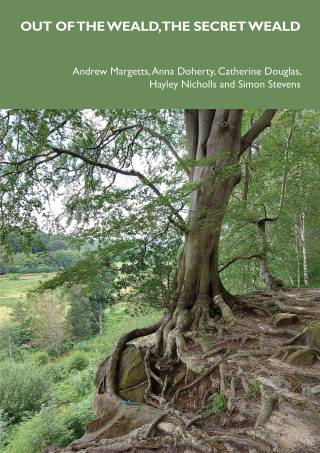 OUT OF THE WEALD, THE SECRET WEALD
OUT OF THE WEALD, THE SECRET WEALD

Andrew Margetts, Anna Doherty, Catherine Douglas, Hayley Nicholls and Simon Stevens (2023)
This volume details the results of archaeological work conducted by Archaeology South-East (UCL Institute of Archaeology) across four sites within the Sussex Weald. Among the findings presented here are some regionally important remains, including one of just a handful of known Palaeolithic finds with a Wealden provenance, perhaps some of the earliest land division so far excavated in the Wealden region, a Roman shrine and what could possibly constitute the remains of an Iron Age fort, one of the hill-slope type.
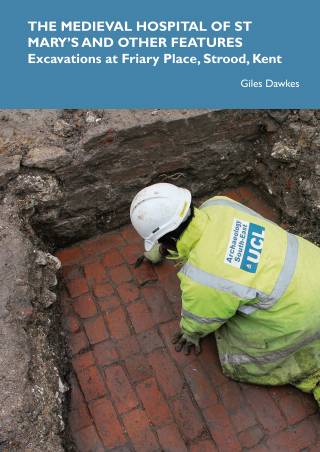 THE MEDIEVAL HOSPITAL OF ST MARY’S AND OTHER FEATURES: excavations at Friary Place, Strood, Kent
THE MEDIEVAL HOSPITAL OF ST MARY’S AND OTHER FEATURES: excavations at Friary Place, Strood, Kent

Giles Dawkes (2020)
The archaeological investigations at Friary Place, Strood, Kent, identified four main periods of archaeological activity from the Late Bronze Age to the 19th century. The most significant findings were evidence of Bronze Age and Roman salt working, a Roman and early medieval palaeochannel and saltmarsh deposits, the remains of the medieval hospital of St Mary, and 17th-century and later post-medieval buildings. In addition, a moderate assemblage of finds and environmental evidence was recovered.
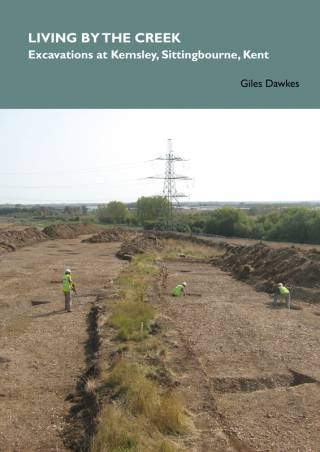 LIVING BY THE CREEK: Excavations at Kemsley, Sittingbourne, Kent
LIVING BY THE CREEK: Excavations at Kemsley, Sittingbourne, Kent

Giles Dawkes (2019)
A series of archaeological investigations carried out along the route of the Sittingbourne Northern Relief Road identified a multi-period site dating from the earlier prehistoric to the Roman periods. The earliest features were Neolithic/Early Bronze Age pits, waterlogged alluvial deposits and an occupation horizon. A Middle Bronze Age ring-ditch with central cremation burial was found on Kemsley Down. In the Late Iron Age/Early Roman period a field system and possible enclosed settlement were established on Kemsley Down. By the 2nd century AD, the settlement was abandoned and the area by the ring-ditch used as a small cremation cemetery. In addition, a salt-evaporation hearth or saltern was identified on the edge of the marsh.
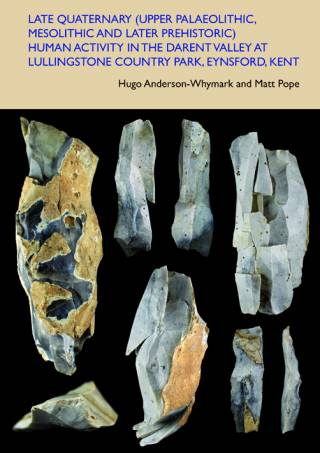 Late Quaternary Human Activity in the Darent Valley at Lullingstone Country Park, Eynsford, Kent
Late Quaternary Human Activity in the Darent Valley at Lullingstone Country Park, Eynsford, Kent

Hugo Anderson-Whymark and Matt Pope (2016)
Between 2009 and 2011, Archaeology South-East carried out a series of excavations and watching briefs in advance of development at the Lullingstone Country Park, near Eynsford, Kent. The work, commissioned by Kent County Council, revealed a deep sequence of Pleistocene and Holocene slope deposits in the Darent river valley. In the upper part of this sequence high-resolution and apparently in situ stone artefacts were recovered which spanned the end of the last glacial period and into the Early Holocene.
Key findings include a rich cluster of refitting Terminal Upper Palaeolithic flint artefacts characteristic of Lateglacial hunter-gatherer 'longblade'cultures and a more diffuse spread of Early Mesolithic flintwork, including microliths, as part of a preserved land surface. In addition later Neolithic and Bronze Age flintwork was found within and on the surface of Holocene colluvial deposits. Deeper geoarchaeological survey revealed these archaeologically-rich surface deposits were only the upper part of a deep sequence of sediments which spanned a period in excess of 100,000 years. At the base of this sequence, at 4m depth, organic deposits likely to date to the last interglacial period were recovered. These were overlain by cold climate solifluction deposits and in turn Holocene deposits which include Bronze Age bank and ditch features. Stone artefact refitting was targeted at the Terminal Upper Palaeolithic and Mesolithic material, giving insights into the technology and behaviour of hunter-gatherers occupying southern Britain at the transition between the last ice age and the emerging world of the Holocene.
This volume is currently out of print, please download a digital copy below.
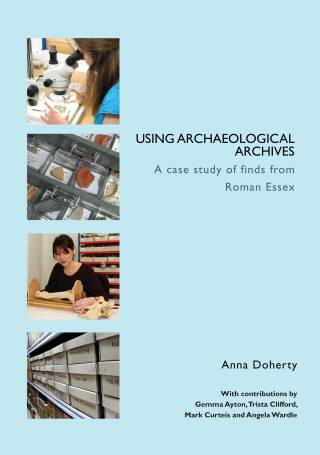 USING ARCHAEOLOGICAL ARCHIVES: A case study of finds from Roman Essex
USING ARCHAEOLOGICAL ARCHIVES: A case study of finds from Roman Essex

Anna Doherty (2015)
This case study is the second publication to result from the English Heritage funded project, originally known as 'Town and Country in Roman Essex'. This project was conceived as a large-scale regional study based on the comparative analysis of assemblages, focusing on pottery, coins, registered finds, vessel glass and animal bone. Utilising the unusually rich databases generated by rescue excavations in the region dominated by Colchester and London, the project examined how the creation of these cities affected rural landscapes and communities in the first 200 years of Roman administration and control. The results of the research were published in the 2013 volume Alien Cities: consumption and the origins of urbanism in Roman Britain.
It was always an aim of the project to produce a separate publication that would explore in more detail the issues associated with conducting major regional research projects, making use of data from published or archive sources. This case study covers the process of collecting and using data and makes some recommendations addressing specific methodological problems in order to improve both the quality and the quantity of data available to future researchers. It is not intended to be a final word on such issues but to contribute to the discussion on how best to utilise these important archaeological resources.
This publication is available to download and for FREE as a hard copy. Email ase@ucl.ac.uk for a hardcopy.
 Close
Close

